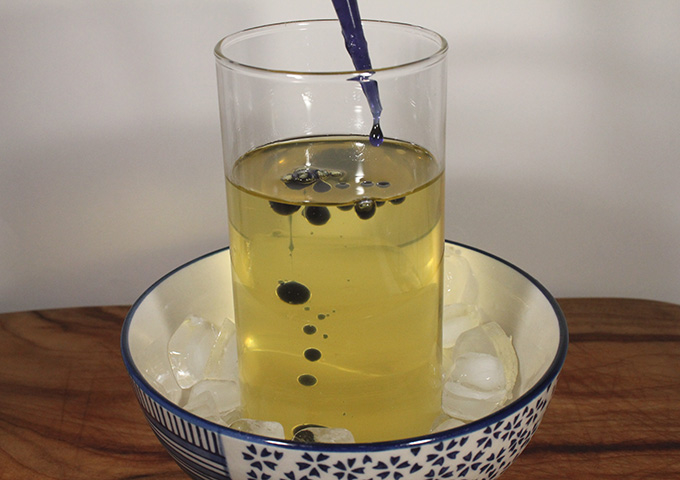
What you need
- 250 ml vegetable oil (chilled in the refrigerator)
- 100 ml fruit juice such as apple or orange (Note: Do not use juice that contains pineapple, kiwi, papaya, mango, or guava, as the gelatine may not set.)
- 1 tablespoon powdered gelatine*
- ice cubes
- pipette or spoon
- tall glass, small bowl, strainer and jug (for leftover oil)
*Vegan substitute: 1 teaspoon agar powder. In Step 4, gently simmer the liquid for 1 minute.
What to do
- Chill vegetable oil in the refrigerator overnight.
- Add the fruit juice to a small saucepan and sprinkle the gelatine over the surface of the juice.
- Leave to sit for 5 minutes.
- Stir the juice mixture over a medium heat on the stove until the mixture is steaming hot and the gelatine has melted. Do not boil.
- Leave the juice mixture to cool for 20-30 minutes but do not allow it to set.
- Pour the cold vegetable oil into a tall glass and place the glass in the small bowl.
- Add some ice cubes to the bowl to keep the oil cold.
- Use the pipette or spoon to place drops of the juice mixture into the oil and watch as the drops fall down through the oil.
Note: If the juice mixture becomes too cold, it will become too thick to work with and may need to be re-heated and left to cool again. - Pour the oil into the jug, through the strainer.
- Use cold water to rinse any remaining oil off the fruit juice caviar before serving with dessert!
What’s happening?
The drops of fruit juice mixture fall down through the cold oil under the force of gravity because the fruit juice mixture has a higher density than the oil. The fruit juice mixture is mostly water, so it falls without mixing with the oil, and it forms spherical shapes due to a balance of cohesive forces within the water mixture.






